UNStudio Designs Giant Observation Wheel 'Nippon Moon' for Japan
By Bustler Editors|
Tuesday, Sep 3, 2013

Related
UNStudio is in the works of developing the Giant Observation Wheel (GOW) 'Nippon Moon' for a soon-to-be-disclosed location in Japan. Invited by Ferris Wheel Investment, the Dutch studio came up with a user-experience design strategy that balances reality and interactive technology--all while users ride in one of the wheel's 32 capsules.
The Nippon Moon will revolve around a socio-architectural experience--so to speak--that begins from purchasing tickets to after visitors complete their roundabout trip on the ferris wheel. By downloading the Nippon Moon smartphone and tablet app, this experience will encourage visitors to learn about and engage with both their surroundings on the wheel and with each other.
From this proposal, UNStudio enhances the concept of the observation wheel.
Check out some renderings and read more about the GOW below.
"In 2012 UNStudio was invited by Ferris Wheel Investment to formulate a vision for the design of a Giant Observation Wheel in Japan. Due to the popularity of Ferris Wheels in Japanese culture and a potential flow of millions of tourists from South-East Asia, the project was required to have an international impact and differ substantially from all existing wheels of its kind. Structural constraints defined by Arup and Mitsubishi Heavy Industries - two of the world’s most specialised wheel engineers – left little room for maneuver due to the location and the size of the GOW."

"The challenge for UNStudio however was to find a typical language for the architectural design which would characterise the overall idea behind the function of the Observation Wheel. Essential to this approach was the creation of a coherent design strategy which could capture the full scope of the userexperience offered by the Observation Wheel. In order to individually suit this experience to the visitors, UNStudio partnered with Experientia to research how behavior could influence user-experience."
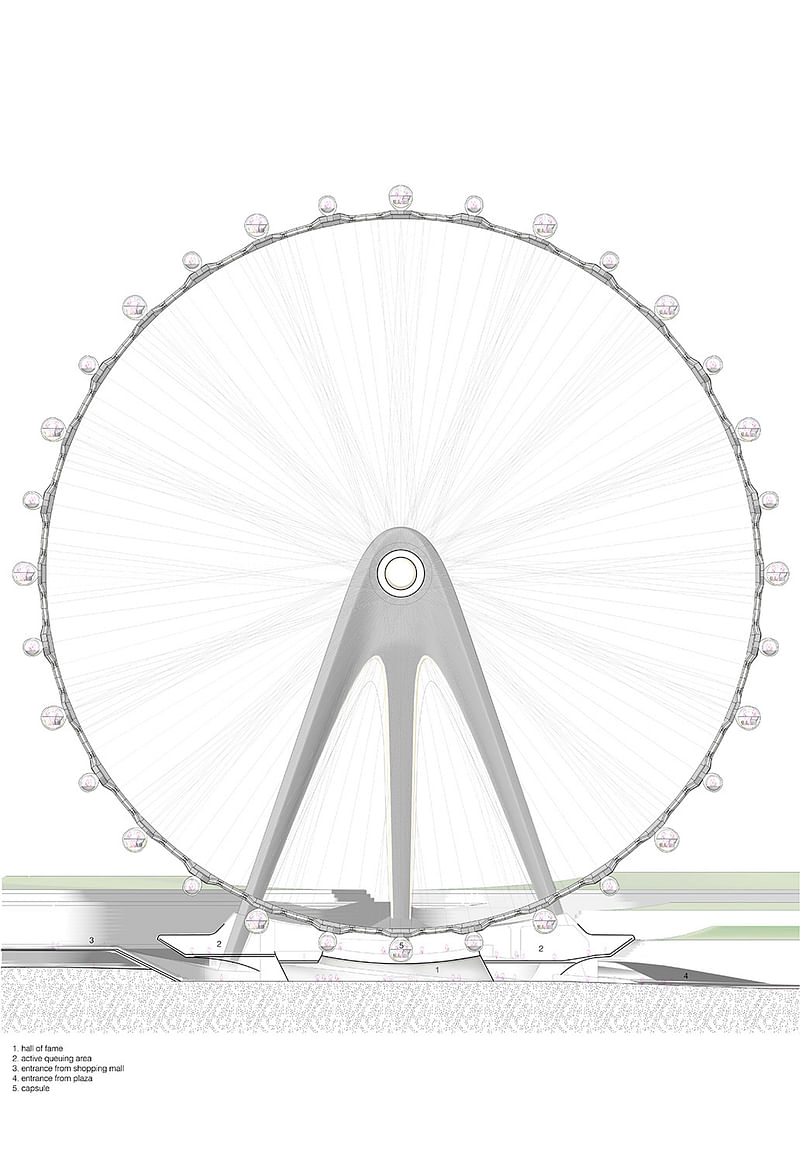
"UNStudio’s ‘Nippon Moon’ is a new cultural blockbuster in the broadest sense. It has been designed to create a journey in which learning about the environment, culture and one’s individual part in this is central. Four key elements define the logics of the socio-architectural design; enhancement of the senses, interactivity, experience and romanticism. Through the integration of interactive design elements it was possible to extend the design far beyond both the moment you physically become part of the wheel and long after you disembark. In order to achieve this, a virtual world was created in which the visitor becomes part of the social network which revolves around the GOW. Discovery, the Ride and the Return are three chapters of the design which contribute to attracting visitors and to the stimulation of the imagination."

"The journey begins with the optional online purchase of tickets and the downloading of the Nippon Moon app. Visitors can not only chose the time of their ride, but can also choose the theme of their experience, as each of the single and double-decker capsules on the wheel focus on a different theme. Upon entering the visitor centre guests are greeted by the ‘Hall of Fame’, a dynamic installation of digital photographs taken by visitors during their ride. These photographs can be uploaded instantly to the Hall of Fame during the ride and discovered on display in the installation upon leaving."
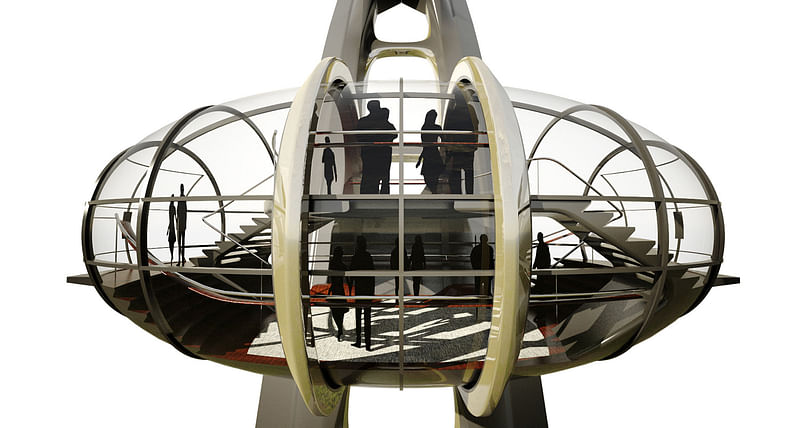
"From the ticket pick-up point and cloakroom facilities on the ground floor, the visitor follows a circular ramp, along which retail, food & beverage and exhibition pockets are anchored. Due to a system of ‘Active Queuing’ which notifies the visitor of the time remaining until boarding, standing in line for extended periods of time is eradicated, leaving the visitor free to make use of all the facilities until it is their time to board their pre-selected capsule."
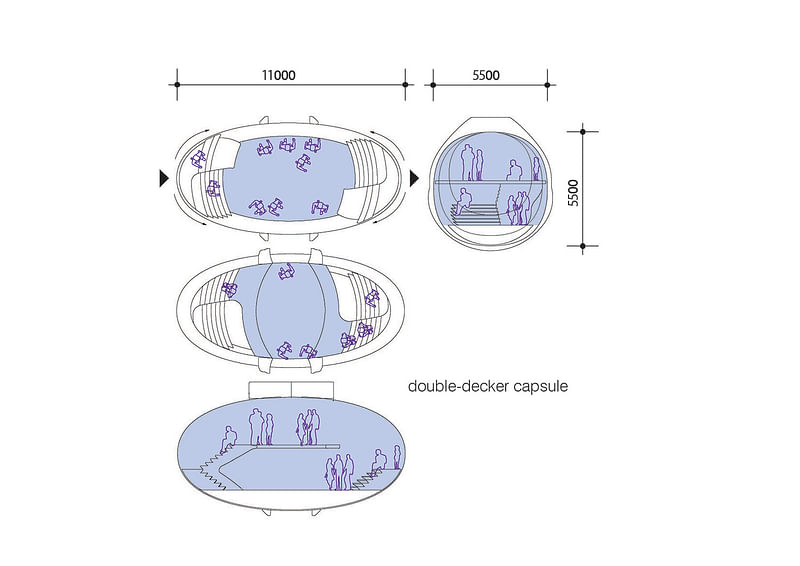
"Interactivity is used to develop a greater sense and understanding of the surrounding reality and results in an active rather than a passive visitor. The experience mediates between the real and the virtual, bringing about a significantly different moment in time and creating a memory or ‘after image’.
Upon leaving the wheel, the visitor follows a second circular ramp with further facility pockets, eventually returning to the cloakroom area on the ground floor.
Romanticism is an integral part of the vision to ensure that the design and engineering of the wheel can become embedded in history as a new development in engineering and an integral part of modern Japanese culture."
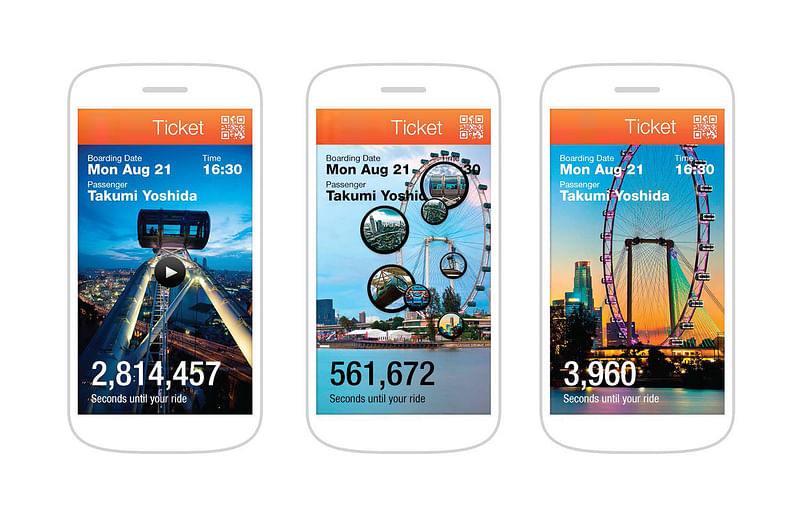
"The Nippon moon app is designed as a strategy for a user-experience interface that can be installed on smartphones and tablets. During the ride, this accessible software makes it possible to communicate with people in the other capsules, who are otherwise physically and visually separated from you and whose capsule follows a different theme to your own."
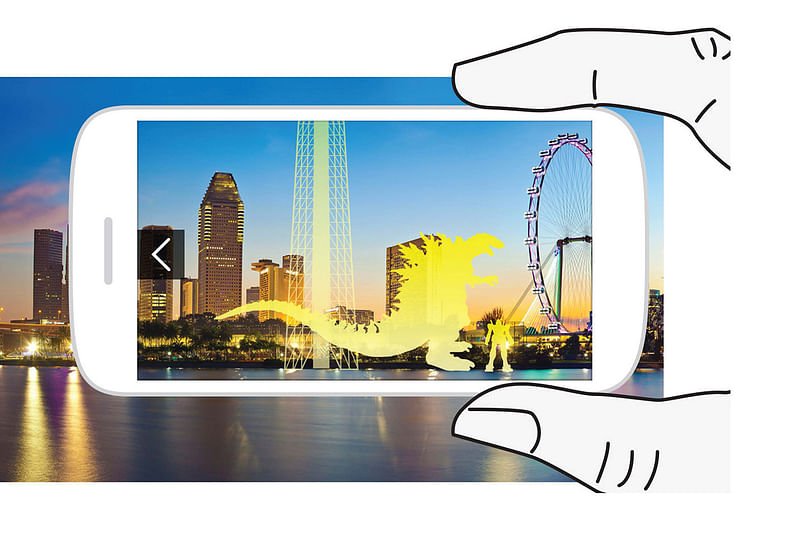
"In addition the possibility to enhance the senses through the incorporation of augmented animations or sounds helps to focus the experience of the visitor. The app also allows the visitor to switch from reality to digitally altered views from the capsules, which are created through augmented reality techniques in the transparent skin of the capsules.
The concept of the observation wheel itself is not new, however the idea to merge the robustly designed and engineered physical wheel with a fully integrated virtual world creates the unique character of the Nippon Moon GOW."
Project data and credits
Client: Ferris wheel Investment Co.,Ltd
Location: Japan
Building surface: Terminal and platform 7,200 m2
Building volume: Terminal and platform 90,000 m3
Capsules: 32
Building site: 18,000 m2
Program: Giant Observation Wheel
Status: Design
Credits
UNStudio: Ben van Berkel, Gerard Loozekoot with Frans van Vuure, Filippo Lodi and Harlen Miller, Jan Kokol, Wendy van der Knijff, Todd Ebeltoft, Tina Kortmann, Patrik Noome, Jeroen den Hertog, Iain Jamieson
Advisors
Engineer: Arup Tokyo + Melbourne
Interactive design: Experientia, Italy
Animation: Submarine, Amsterdam
Visualisation: MIR
Read more details about the project here.

Share
0 Comments
Comment as :